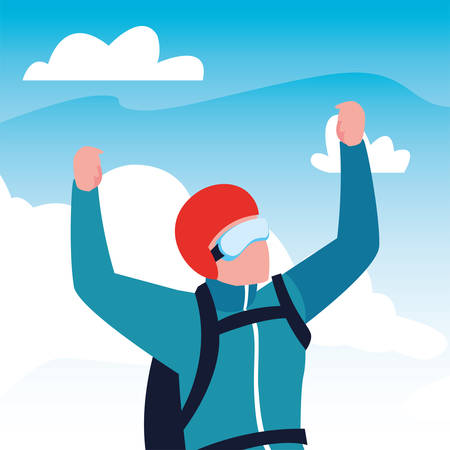1. Historical Roots of Hiking in America
Hiking in the United States has deep roots that stretch back long before it became a popular outdoor activity. To understand how hiking culture evolved, it’s important to look at its origins, which are tied closely to the country’s diverse history and landscapes.
Indigenous Traditions: The First Trails
Long before European settlers arrived, Native American tribes traveled across vast stretches of land for hunting, trading, and connecting with other communities. These journeys created some of the earliest trails in North America. For many Indigenous groups, walking through forests, mountains, and plains was a way of life rather than recreation. Their knowledge of natural pathways, safe routes, and seasonal changes laid the groundwork for future explorers and hikers.
Early Explorers and Settlers
When European explorers and early American settlers began moving westward, they often relied on Indigenous trails for guidance. These paths helped shape migration routes like the Appalachian Trail corridor and segments of the Oregon Trail. In the 1800s, hiking wasn’t yet seen as a leisure activity; instead, it was necessary for exploration, survival, and expansion.
Key Differences in Early Hiking Traditions
| Group | Main Purpose | Trail Usage |
|---|---|---|
| Indigenous Peoples | Cultural, hunting, trading | Established natural paths based on seasonal needs |
| Explorers/Settlers | Migrating, mapping land | Followed existing trails or blazed new ones for expansion |
The Birth of Organized Hiking and Trail Systems
The late 19th and early 20th centuries marked a turning point as Americans began to see nature as a place for recreation. Groups like the Sierra Club (founded in 1892) encouraged people to experience wilderness areas responsibly. Soon after, states and local governments started developing marked trails in parks and forests for public use. One of the most famous examples is the Appalachian Trail, which began construction in the 1920s as a continuous footpath from Georgia to Maine.
Highlights from Early American Hiking History:
- Sierra Club Formation (1892): Promoted environmental stewardship and hiking as a healthy pastime.
- National Parks Establishment: Protected wild lands and encouraged public access via maintained trails.
- The Appalachian Trail Project (1921): Set a new standard for long-distance hiking routes.
The combination of Indigenous traditions, pioneering spirit, and organized conservation efforts laid the foundation for America’s unique hiking culture—a culture that continues to grow and evolve today.
2. The Golden Age of Trailbuilding and Conservation
The history of hiking in the United States would not be complete without talking about the incredible growth in trailbuilding and conservation during the early to mid-20th century. This era, often called the “Golden Age” of American trails, shaped the way people experience the outdoors today.
The Rise of Major Trail Networks
During this time, some of America’s most famous long-distance hiking trails were created. The idea was to connect wild places so people could explore nature for days or even weeks at a time. Here are some of the most important trail networks that took shape:
| Trail Name | Year Established | Main Features |
|---|---|---|
| Appalachian Trail (AT) | 1937 | 2,190 miles from Georgia to Maine, passing through 14 states |
| Pacific Crest Trail (PCT) | Officially completed in 1993 (concept began in 1930s) | 2,650 miles from Mexico to Canada along the western mountains |
| John Muir Trail (JMT) | 1938 | 211 miles in California’s Sierra Nevada, named after John Muir |
The National Park Service Steps In
The National Park Service (NPS), founded in 1916, played a huge role in making hiking accessible to everyone. By creating and maintaining national parks, the NPS protected beautiful landscapes and made sure there were trails, maps, and signs for visitors. Iconic parks like Yosemite, Yellowstone, and Grand Canyon became magnets for outdoor lovers. The NPS also worked with volunteers and local groups to extend trail networks and make hiking safer.
The Influence of Conservation Leaders: John Muir and Beyond
No discussion about American hiking and conservation is complete without mentioning John Muir. Known as the “Father of the National Parks,” Muir inspired generations to protect wild places through his writings and activism. He founded the Sierra Club in 1892, which remains a major force for environmental advocacy today. Other leaders like Benton MacKaye (who proposed the Appalachian Trail) also contributed vision and energy to the movement.
| Name | Main Contribution | Legacy Today |
|---|---|---|
| John Muir | Pushed for creation of national parks; founder of Sierra Club; inspired nature appreciation nationwide | Muir Woods National Monument; John Muir Trail; ongoing influence on conservation policy |
| Benton MacKaye | Conceptualized the Appalachian Trail as a “greenway” for recreation and renewal | The AT is one of the world’s most popular long-distance trails; concept of trail corridors lives on in new projects |
| Stephen T. Mather (First NPS Director) | Developed policies for park management; promoted public access while ensuring preservation | NPS continues to balance recreation with stewardship thanks to his groundwork |
Lasting Impact on Hiking Culture
This golden age set the stage for what hiking means in America today—an activity open to all ages, backgrounds, and skill levels. Thanks to these early efforts in trailbuilding and conservation, millions of people can now enjoy America’s natural wonders up close. Whether you’re thru-hiking an epic trail or taking a short stroll in a local park, you’re part of a tradition that started nearly a century ago.

3. Hiking as a Mainstream American Pastime
The Rise of Hiking in Everyday Life
Hiking wasnt always the widely loved activity it is today. In the early days, hiking in the United States was mostly seen as an adventure for explorers and naturalists, not something for the average person. Over time, however, it grew into a favorite pastime for people of all ages and backgrounds.
Outdoor Clubs and Social Movements
One key factor in making hiking mainstream was the rise of outdoor clubs. Organizations like the Sierra Club (founded in 1892) and The Appalachian Mountain Club (founded in 1876) helped bring people together with shared interests in exploring nature. These clubs organized group hikes, built and maintained trails, and promoted conservation. They also made hiking feel more accessible and safe, especially for newcomers.
Popular Outdoor Clubs and Their Impact
| Club Name | Year Founded | Main Contributions |
|---|---|---|
| Sierra Club | 1892 | Trail building, conservation efforts, group hikes |
| Appalachian Mountain Club | 1876 | Trail maintenance, education programs, outdoor leadership |
| The Mountaineers | 1906 | Training courses, community events, environmental advocacy |
Advancements in Gear and Technology
Another major change was in hiking gear. Early hikers wore heavy boots and carried basic supplies. Today, advancements have made hiking much easier and more comfortable. Lightweight backpacks, moisture-wicking clothing, GPS devices, and portable water filters have transformed the experience. This progress means that more people—regardless of age or fitness level—can enjoy spending time on trails.
Then vs. Now: Hiking Gear Evolution
| Old School Gear | Modern Gear |
|---|---|
| Leather boots, wool clothing, metal canteens | Synthetic shoes, technical apparel, hydration packs |
| Paper maps and compasses | GPS watches and smartphone apps |
| Heavy canvas backpacks | Lightweight ergonomic packs with support frames |
The Weekend Getaway Culture
The culture of weekend getaways has also played a big role in making hiking popular. As Americans started to get more paid time off and better transportation options (like cars and trains), heading out of town for a quick escape into nature became common. National parks and local trails offered the perfect settings for families and friends to relax away from busy city life.
The American Hiking Experience Today
Together, outdoor clubs, better gear, and the tradition of weekend trips have turned hiking into a beloved American activity. Whether its a day hike at a nearby state park or an ambitious trek along the Pacific Crest Trail, hiking now brings millions of Americans together to explore their countrys natural beauty.
4. Modern Hiking Trends and Community
Diversity and Inclusivity on the Trails
In recent years, hiking in the United States has become more diverse and inclusive than ever before. Traditionally, hiking was seen as an activity mainly for certain groups, but now people from all backgrounds are hitting the trails. Organizations and community groups are working hard to make outdoor spaces welcoming for everyone, regardless of race, gender, age, or physical ability. This shift is helping to break down barriers and encourage a wider range of people to enjoy nature.
The Role of Social Media in Shaping Hiking Culture
Social media platforms like Instagram, Facebook, and TikTok have changed how Americans experience hiking. Hikers now share their adventures online, inspiring others to explore new places. Hashtags like #hikemoreworryless and #optoutside connect people with similar interests and help build a sense of community. However, this trend also brings challenges—popular trails can become crowded, and some hikers may prioritize getting the perfect photo over respecting nature.
| Social Media Impact | Positive Effects | Challenges |
|---|---|---|
| Trail Discovery | Easier access to trail info Encourages exploration |
Overcrowding on popular trails |
| Community Building | Connects hikers nationwide Shares safety tips & stories |
Spread of misinformation |
| Awareness & Advocacy | Promotes conservation Highlights diversity initiatives |
Potential for “slacktivism” |
The Rise of Thru-Hiking Movements
Long-distance hikes like the Appalachian Trail (AT) and Pacific Crest Trail (PCT) have gained major popularity in American culture. Thru-hiking—trekking an entire long trail in one go—has become a badge of honor among outdoor enthusiasts. Every year, thousands attempt these journeys, inspired by books, documentaries, and online communities. The growth of thru-hiking has led to better trail infrastructure and a vibrant subculture dedicated to adventure, resilience, and environmental stewardship.
Popular U.S. Thru-Hiking Trails at a Glance
| Trail Name | Miles Covered | Main Highlights |
|---|---|---|
| Appalachian Trail (AT) | ~2,190 miles | Eastern forests Cultural heritage Tight-knit hiker community |
| Pacific Crest Trail (PCT) | ~2,650 miles | Sierra Nevada views Diverse landscapes Pioneering spirit |
| Continental Divide Trail (CDT) | ~3,100 miles | Remote wilderness Breathtaking mountains Lesser-traveled paths |
The Future of Hiking Communities in America
The modern hiking scene in the U.S. is shaped by inclusivity efforts, social media influence, and the growing allure of epic trail adventures. These trends continue to redefine what it means to be a hiker in America today.
5. Future Directions: Sustainability and Challenges Ahead
As hiking continues to grow in popularity across the United States, its future is being shaped by several key trends and challenges. From shifting attitudes toward public lands to the impact of climate change and increasing concerns about access, hikers and land managers alike are rethinking what it means to hit the trails responsibly.
Climate Change and Its Impact on Trails
Climate change is already affecting many of America’s favorite hiking destinations. Extreme weather events, wildfires, and shifting ecosystems can mean trail closures or even permanent changes in landscape. Some popular areas experience longer wildfire seasons or more severe flooding, while others see species migration that alters local flora and fauna.
| Climate Challenge | Impact on Hiking |
|---|---|
| Wildfires | Trail closures, damaged landscapes, increased safety risks |
| Flooding/Storms | Erosion, washed-out trails, limited accessibility |
| Changing Ecosystems | Loss of native plants/animals, altered scenery |
Land Access: Who Gets to Hike?
Access to public lands remains a big topic in American hiking culture. As cities expand and private development increases, hikers sometimes find their favorite spots off-limits. There are ongoing debates about how much land should be set aside for recreation versus other uses like mining or real estate. Meanwhile, some communities—especially Indigenous groups—are advocating for greater recognition and stewardship of ancestral lands.
Key Land Access Issues:
- Privatization: More land is being bought up for exclusive use, making it harder for everyday people to enjoy nature.
- Crowding: Popular trails get packed, especially near big cities, putting stress on natural resources.
- Diverse Voices: Calls are growing for more inclusive outdoor spaces that welcome everyone regardless of background.
Evolving Attitudes Toward Public Lands
The American relationship with public lands is changing. Younger generations are often more focused on sustainability and stewardship. Leave No Trace ethics are now mainstream, with more hikers packing out trash and respecting wildlife. Social media has brought new attention to hidden gems but also created challenges with overcrowding and overuse.
Trends in Hiking Culture:
- Sustainable Practices: Composting toilets, trail maintenance days, and educational programs are becoming standard at many parks.
- Technology: Apps help hikers find less crowded trails and report problems directly to park managers.
- Community Action: Local hiking clubs partner with conservation groups to advocate for protected areas.
The Road Ahead
The future of hiking in America will depend on finding a balance between enjoying wild places and protecting them for future generations. As issues like climate change and land access become more pressing, both individuals and organizations must adapt—whether by supporting conservation efforts or simply practicing good trail etiquette every time they head outdoors.


